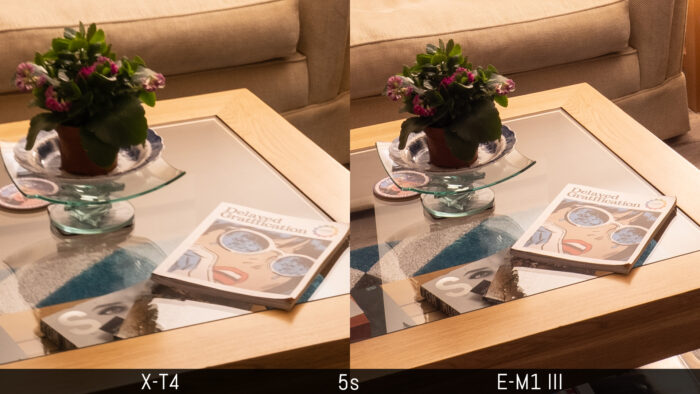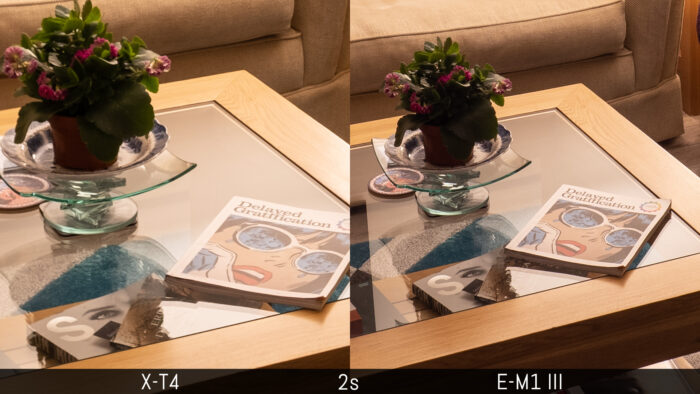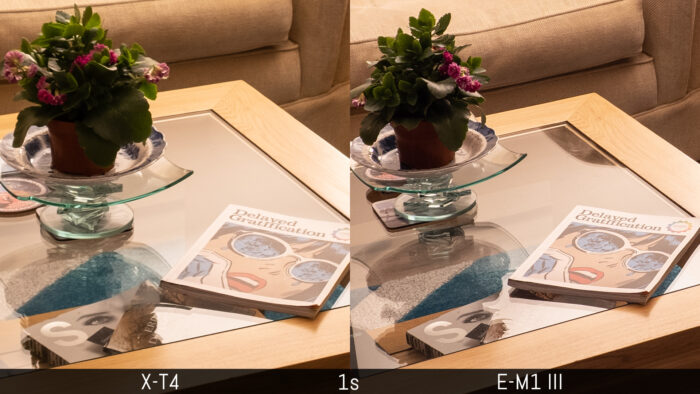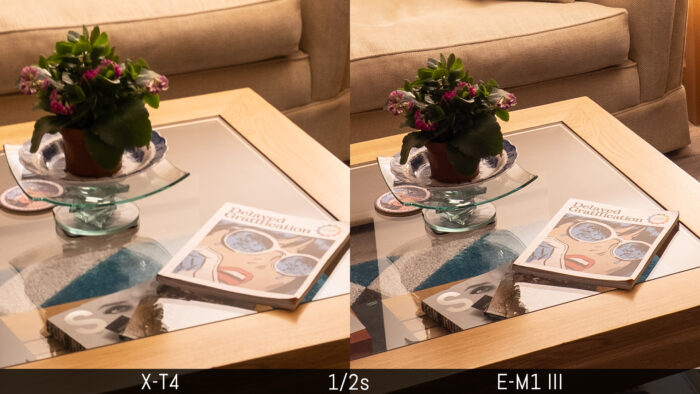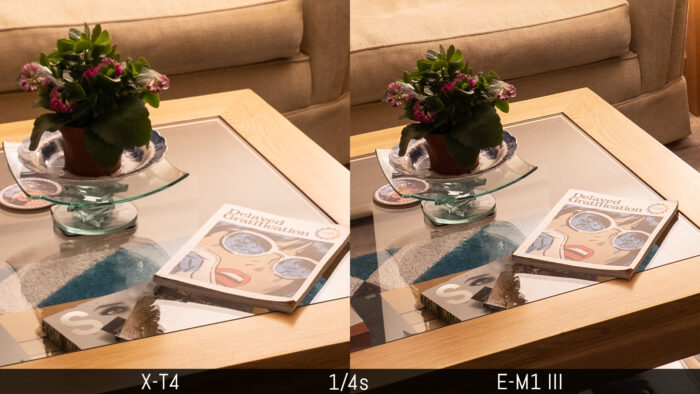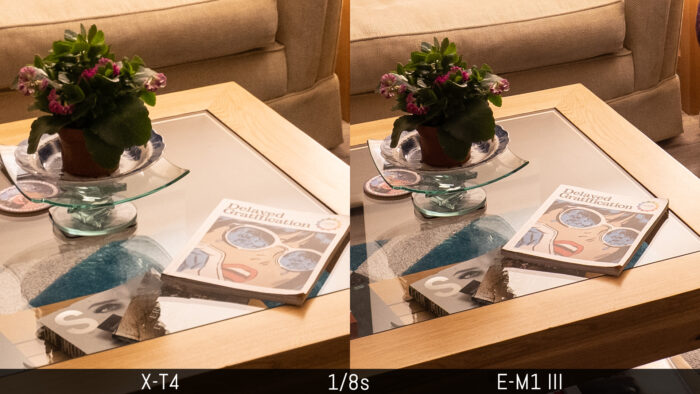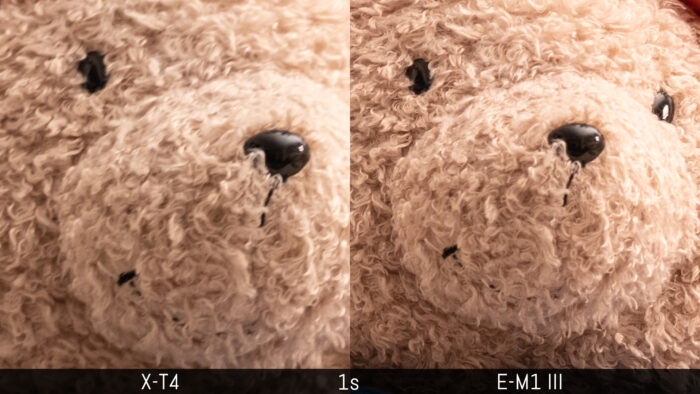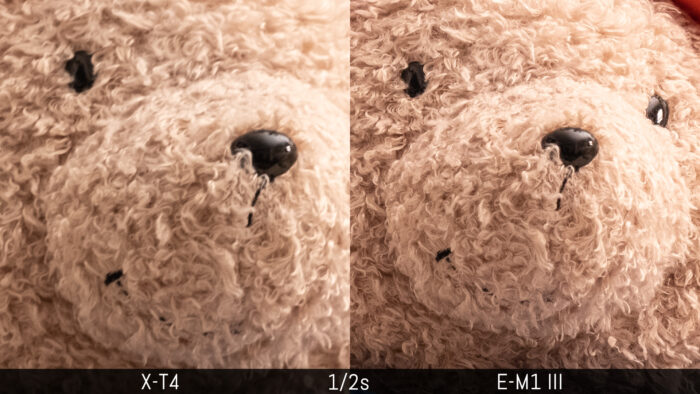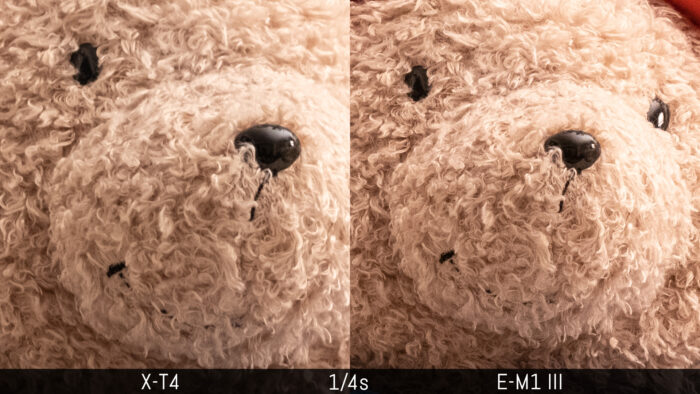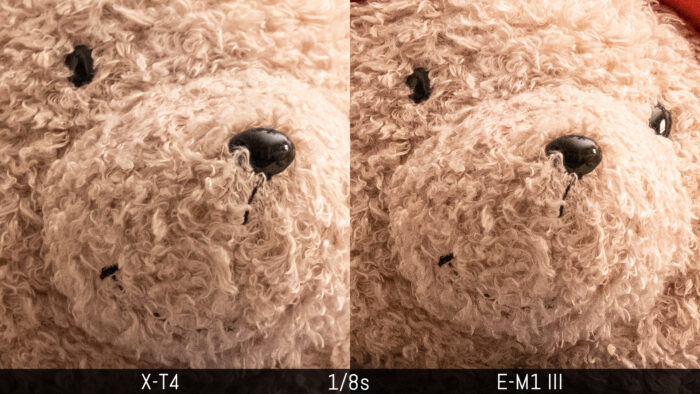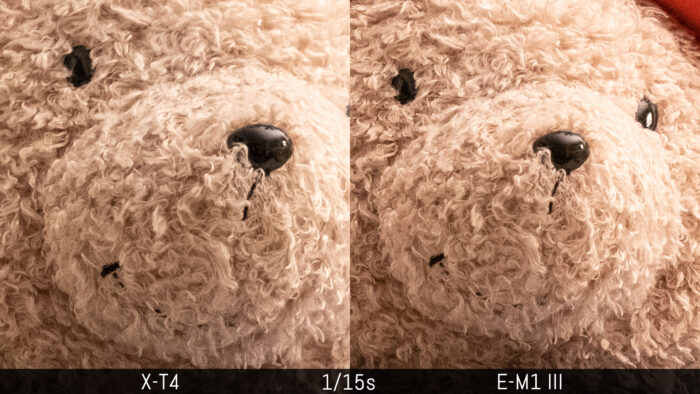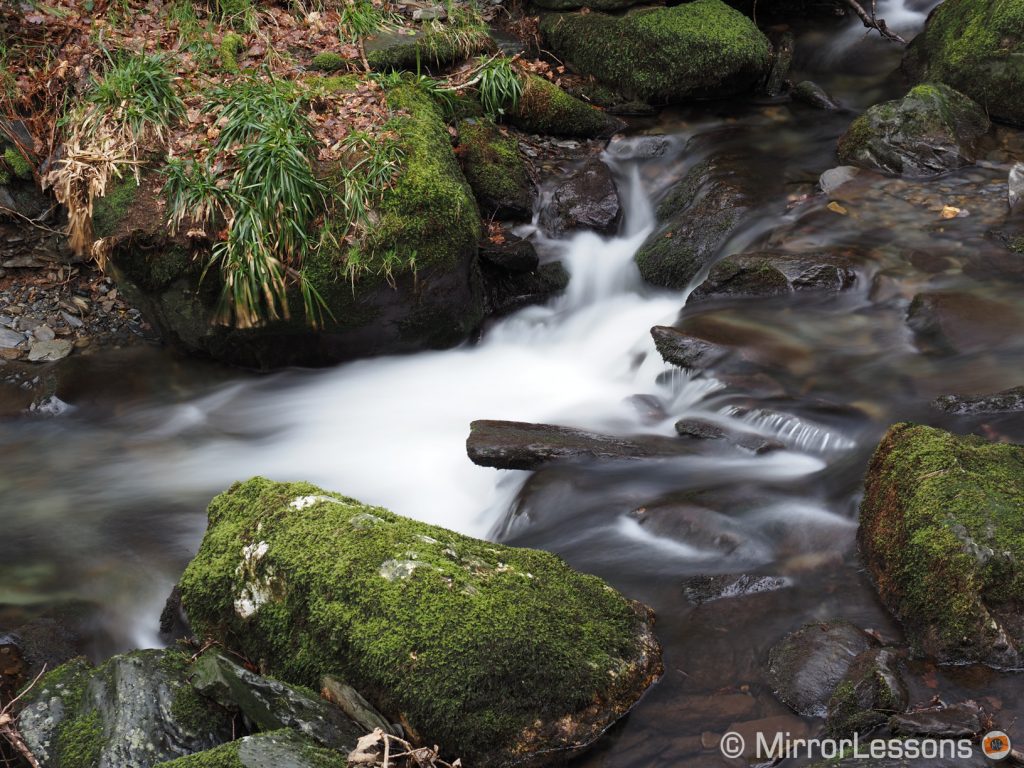The X-T4 is Fujifilm’s third camera with in-body image stabilisation (IBIS). It comes after the X-H1, which was released in 2018, and the GFX-100 medium format camera released in 2019.
Fujifilm has taken more time than other brands to introduce this popular feature to its users. The X-H1 was actually built for this purpose, with a larger body that would accommodate the sensor shift mechanism. Then Fuji’s engineers managed to reduce the IBIS size by approximately 30% and fit it inside the X-T4 while only slightly increasing the body size.
In the case of Olympus, image stabilisation needs no introduction. They were the first to release the 5-axis IBIS on the OM-D E-M5 in 2013, and have remained a step ahead of the competition ever since.
Because Olympus has always been the reference when comparing different brands, I decided to put the X-T4 and the E-M1 III side-by-side to see how well this technology works on Fujifilm cameras in 2020, and how much they have improved compared to their first attempt two years ago.
Ethics statement: We bought the X-T4 and rented some lenses to perform this comparison. The Olympus kit was loaned to us for two weeks. We were not asked to write anything about these products, nor were we provided any other compensation of any kind. Within the article, there are affiliate links. If you buy something after clicking one of these links, we will receive a small commission. To know more about our ethics, you can visit our full disclosure page. Thank you!
The IBIS Technology
Five axis image stabilisation works by correcting camera shakes on the roll, pitch, yaw, X and Y axes. This is possible because the sensor is suspended on a mechanism that can move inside the body. Olympus, unlike Fujifilm, also exploits this technology for the High Resolution mode (find our more about this in our E-M1 II vs E-M1 III preview).
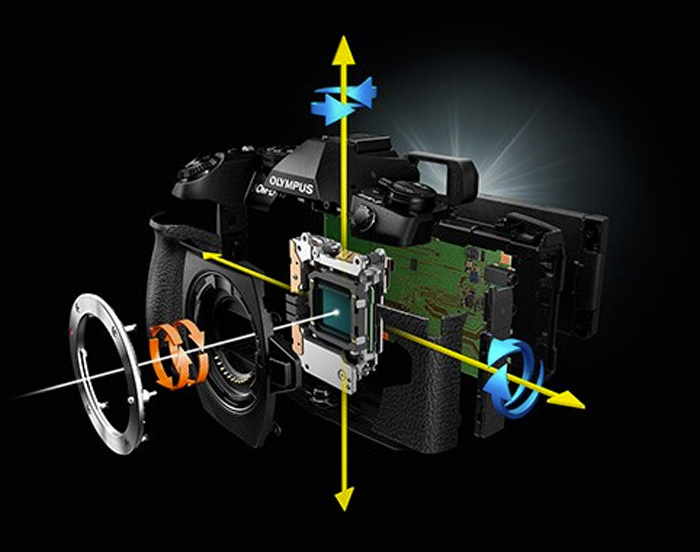
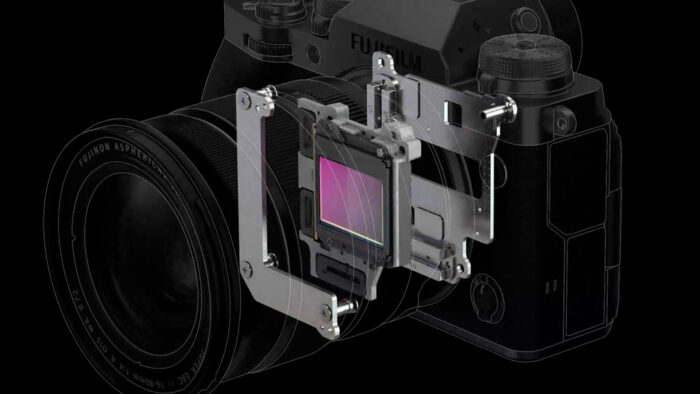
For sensor and optical stabilisation, cameras and lenses are given a standardised rating by the CIPA (Camera and Image Products Association), who is also responsible for other evaluations such as battery life.
The E-M1 III has a rating of 7.0 stops of compensation. This means that you can set a slower shutter speed, corresponding to 7 stops of exposure, in comparison to the default value you would normally use to ensure sharpness. For example, a photo taken at 1/50s with a 50mm lens could be taken at 2.5 seconds.
The X-T4 has been given of 6.5Ev which is very close so, on paper, these two cameras should perform in a similar way.
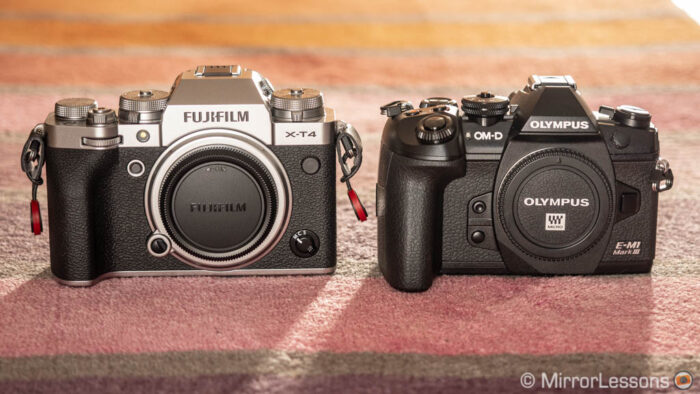
One important note about the Fuji model is that rating is not the same for all lenses. For example, with the XF 35mm 1.4 you get 6.5 stops of compensation, but with the XF 16-55mm f2.8 zoom it’s 5.5Ev. You can consult the full compatibility list on the Fujifilm website.
Over the years, image stabilisation has evolved and allowed cameras to combine both sensor and optical stabilisation to further improve the results.
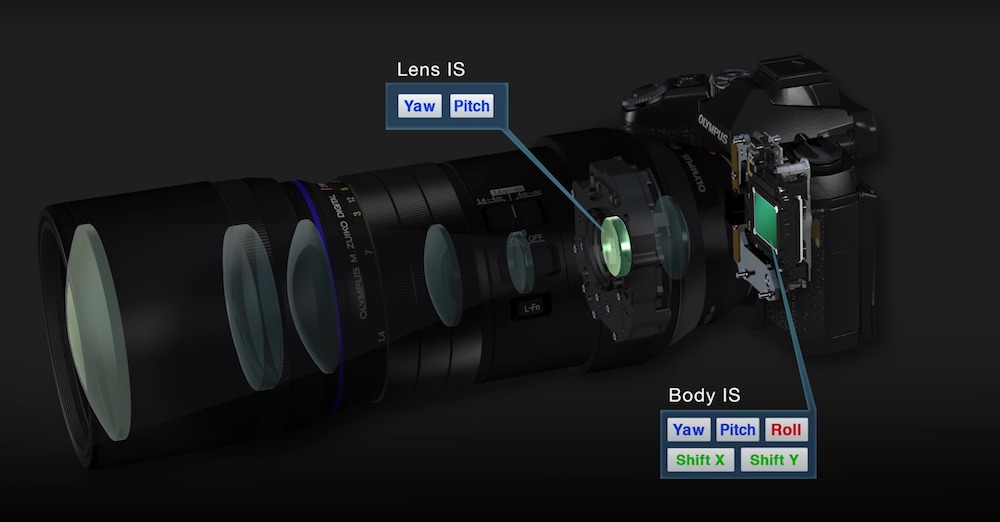
Olympus calls this Sync IS. The company only has two lenses with optical stabilisation, the 300mm f/4 Pro and the 12-100mm f/4 Pro, but with the latter, the rating goes up to 7.5Ev (the highest among mirrorless cameras). The E-M1 III uses the 2 axes on the lens (pitch and yaw) in addition to the five axes on the sensor to improve the performance, and this usually makes a difference with long focal lengths.
Although the X-T4 also combines sensor and optical IS, the rating doesn’t increase. Here as well, the performance is lens dependent and can vary between 5.0Ev and 6.5Ev.
X-T4 vs E-M1 III: IBIS Comparison for Still Photography
To see how well the two cameras perform, I took a sequence of 10 shots at different shutter speeds. The goal was to determine two things:
- how far can you push the two cameras at slow shutter speeds
- what keeper rate you get at different shutters speeds.
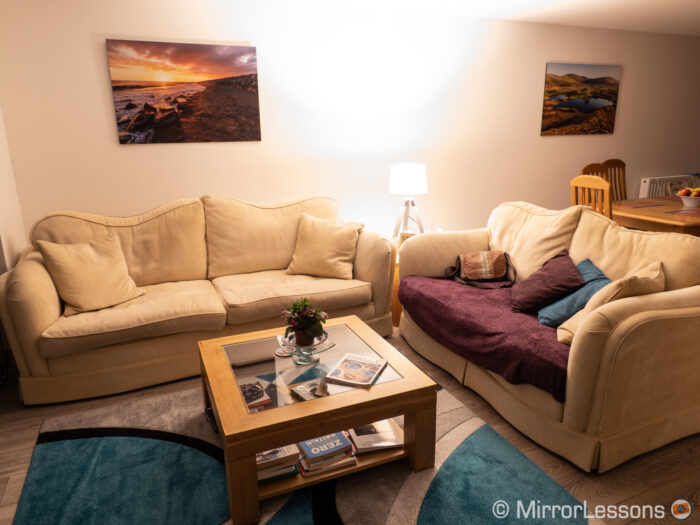
The second point is very important because while an image taken hand-held at 5 or 10 seconds can sound impressive, it is important to understand if you can take it straight away or if many attempts are required to (hopefully) get a keeper. Even with faster shutter speeds like 1/2s or 1/4s, you want to know if you can blindly trust the camera or if you need to check for sharpness in playback mode before moving on.
When evaluating the photos, I gave them a score as follows to determine the keeper rate (only good and acceptable are retained when calculating the percentage):
- good: the image is sharp, all the details are crisp and clear
- acceptable: sharpness is not 100% spot on, but you can still see most of the details in the image and there is no visible motion blur
- close: the photo looks ok, but when you zoom in you realise that most details are compromised because of motion blur
- bad: you can’t see details clearly, or the image looks blurred even without zooming in
Because the X-T4 and E-M1 II have different sensor sizes, I prioritised working with the same field of view (more important in the real world), which means I used different focal lengths. I used the electronic first curtain shutter that helps reduce motion blur a little.
X-T4 vs E-M1 III: Image Stabilisation with a Wide-Angle Lens
- Olympus lens used: 7-14mm at 12mm (IBIS only), 12-100mm at 14mm (Sync IS)
- Fujifilm lens used: 8-16mm f/2.8 at 16mm (IBIS only), 18-55mm f2.8-4 at 18mm (IBIS/OIS)
- Equivalent field of view: 24mm (IBIS only) / 28mm (IBIS/OIS)
Being able to use crazy slow shutter speeds on Olympus cameras is no news to me, so I wasn’t surprised to see that the E-M1 III managed to capture a sharp shot at 10 seconds. The keeper rate is poor though with just two good images, three close and 5 bad. The X-T4 can’t handle such slow speeds.
With sensor and optical stabilisation working together, Olympus’ keeper rate improves a little but the difference is small versus using the IBIS alone. Again, this is too much for the X-T4.
Keeper rate at 10s:
X-T4: 0%
E-M1 III: 25%
With a shutter speed of 5s, Olympus delivered a few good shots again, and the others were all close. The X-T4 on the other hand continued to struggle, although at 16mm one image wasn’t too far off the mark.
Keeper rate at 5s:
X-T4: 0%
E-M1 III: 30%
A shutter speed of 2 seconds saw the E-M1 III winning again with no real difference between IBIS and Sync IS, while the X-T4 gave me an acceptable result at 18mm using IBIS + OIS, and one close with just IBIS.
Keeper rate at 2s:
X-T4: 0% (IBIS) / 20% (IBIS/OIS)
E-M1 III: 55%
The test for the X-T4 really began with a 1 second exposure, where it started to deliver more acceptable images. The performance was slightly more consistent when using IBIS + OIS. For the E-M1 III, 1 second is a no brainer with either sensor only or Sync IS.
Keeper rate at 1s:
X-T4: 35%
E-M1 III: 85%
Anything faster than 1 second becomes a walk in the park for the Olympus: they’re all sharp regardless of whether I used IBIS only or Sync IS. With the X-T4 however, the performance didn’t increase – in fact it decreased which surprised me. I did a second run of 10 images to make sure and indeed, it couldn’t go past a few acceptable results. IBIS and OIS proved more effective than IBIS alone.
Keeper rate at 0.5s:
X-T4: 10% (IBIS) / 35% (IBIS/OIS)
E-M1 III: 100%
The X-T4 picks up again at 1/4s and delivers a better keeper rate, especially with the 18-55mm lens (IBIS and OIS).
Keeper rate at 1/4s:
X-T4: 60% (IBIS) / 70% (IBIS/OIS)
E-M1 III: 100%
From 1/8s, the X-T4 can finally be trusted for the task, although some disparity between lenses remains (in this case it’s the IBIS/OIS combination that gave a poorer result).
Keeper rate at 1/8s:
X-T4: 90% (IBIS) / 60% (IBIS/OIS)
E-M1 III: 100%
One thing that has become increasingly apparent in this first test is that the Olympus photos look sharper. One explanation could be the difference in optical performance between the XF 18-55mm and the 12-100mm Pro, another could be that Lightroom gives less sharpness by default to the Fuji RAW files (I left the images as they were).
But still, the samples taken with the XF 8-16mm 2.8 and 7-14mm 2.8 should have been closer to the Olympus lens when comparing the good results for each. This leads me to believe that the X-T4 loses some sharpness when IBIS is activated at slow shutter speeds.
If we analyse these first results further, we can understand why the CIPA rating doesn’t tell the full story.
At 24mm equivalent with IBIS only, the E-M1 III gave me a sharp result at 10s. If we consider 1/25s a safe shutter speed to use when there is no stabilisation at all (reciprocal of the effective focal length rule), then 10s corresponds to 8 stops slower, not 7. The X-T4 gave me the first good shot at 1s, which is about 4.6 stops slower, not 6.5.
Telephoto

The second series of tests is with a telephoto lens and an equivalent field of view of 200mm. Here I’m only using IBIS + OIS because there isn’t an equivalent lens without optical stabilisation in the Fujifilm catalogue.
- Olympus lens used: 12-100mm f/4 Pro (Sync IS)
- Fujifilm lens used: XF 50-140mm f/2.8 (IBIS/OIS)
- Field of view: 200mm equivalent
The 50-140mm 2.8 has a rating of 6.0Ev when used on the X-T4, which is the maximum available for a telephoto lens. This means that on paper, the E-M1 III has 1.5 stop of advantage (7.5Ev with the 12-100mm Pro).
None managed to give me a perfect result at 2 seconds, although a few shots were close. At 1 second, the keeper rate is better with the Olympus combo.
Keeper rate at 1s:
X-T4: 0%
E-M1 III: 35%
At half a second, the keeper rate increases on the E-M1 III, whereas the X-T4 still struggle to deliver a sharp result, although the number of “close” images increase.
Keeper rate at 1/2s:
X-T4: 0%
E-M1 III: 60%
At 1/4s, the E-M1 III starts to be nearly perfect, whereas the X-T4 performance starts to deliver acceptable results.
Keeper rate at 1/4s:
X-T4: 25%
E-M1 III: 80%
At 1/8s, the E-M1 III remains more or less at the same level, whereas the X-T4 finally gets a boost in performance.
Keeper rate at 1/8s:
X-T4: 60%
E-M1 III: 85%
From 1/15s the E-M1 III has no issues, and the X-T4 improves a little more although it won’t get near 90%, not even at 1/30s. So if you don’t want to constantly check your images to make sure they are sharp, you’ll have to stay above 1/50s to be safe.
Keeper rate at 1/15s:
X-T4: 70%
E-M1 III: 95%
X-T4 vs E-M1 III: IBIS Comparison for Video
The video below shows you various tests I made with the two cameras with different type of movements. There is a 5 minute introduction that reprises what I wrote at the beginning of this article and explains the different settings you can apply for video when it comes to image stabilisation.
Note: there are two small mistakes in the video below. The CIPA rating for the E-M1 III is 7.0Ev (IBIS only) and not 6.5Ev. Also, the crop factor with digital stabilisation on the Olympus is 1.19x, not 1.9x! Sorry for the confusion.
Here is a summary of what is said in the video:
- overall the E-M1 III does a better job of delivering smooth footage, and often tweaking the settings is not essential to get a good result straight away (although they will help in improving the performance)
- with the X-T4 you have to deal with more jerks, abrupt starts or endings, and it is less stable. Settings such as digital stabilisation or IS Mode Boost can help at times but you have to be careful about when you use them. IS Boost especially can increase the number of jerks when walking for example, making the footage much less pleasant.
Conclusion
Despite the two cameras starting with the same image stabilisation rating, we’ve seen that the results tell a different story. The E-M1 III can deliver sharp images with slower shutter speeds, and overall has a better keeper rating than the X-T4.
The Fuji model doesn’t perform badly, but when I went back and looked at some of the tests I did with the X-H1, I didn’t see a huge improvement despite the CIPA rating suggesting otherwise. There is also a bit of inconsistency in the performance, which is the same conclusion I drew with the X-H1 two years ago.
The Olympus proved more stable and reliable for video, which is another valid point that can make the difference for some people. The X-T4 appears to perform a bit better than the X-H1, but there is still room for improvement.
Of course we could debate which slow shutter speed is slow enough to bring back home a good photo in a real world situation.
A typical scenario can be visiting a city at night with a wide angle lens and no tripod. Looking back at some of the images I took in Torino with the E-M5 II five years ago, I realised that 1 second was enough to keep the ISO to the minimum of 200. Furthermore I had to close the aperture to f/8 to expose properly, and f/8 is not necessary on micro four thirds for a shot like this.
If I translate this result to Fujifilm and the X-T4, the same photo at half a second with an aperture of f/5.6 and the same ISO speed would have worked the same. Half a second is something that the X-T4 can manage with a bit of patience, a few attempts or by making use of whatever you can around you to be more stable (leaning on wall, resting on ramp, etc.) Or you can select 1/4s or 1/8s, raise the ISO to 400 or 800 and you’ll stress less about it (plus let’s face it, the Fuji sensor can handle 800 or 1600 ISO well).
So what real advantage does the E-M1 III give you, excluding video? Well, we could consider darker locations, where you’d have to crank the ISO all the way up. But perhaps something more interesting is that it gives you freedom of movement. If you embrace the non-tripod philosophy, there is a lot you can do with this camera (and other Olympus OM-Ds). Two years later in Turin, the E-M1 II allowed me to capture this.
A 10 second shot hand-held is impressive and can make the headlines, but perhaps the number of times you really need this kind of performance is limited. Even for an astro-photography session, having the camera on a tripod is more comfortable, unless you’re just passing by (at 2 o’clock in the morning? Nah…)
But in any situation where you want to be fast and nimble, image stabilisation can really help. Last but not least, Olympus has a great set of extra features like Live ND that work really well with the excellent IBIS performance.
Reminder: the links below are affiliate links. If you decided to buy something after clicking the link, we will receive a small commission.
Check price of the Fujifilm X-T4 on
Amazon | Amazon UK | B&H Photo | eBay
Check the price of the Olympus OM-D E-M1 III on:
Amazon | Amazon UK | B&H Photo | eBay



